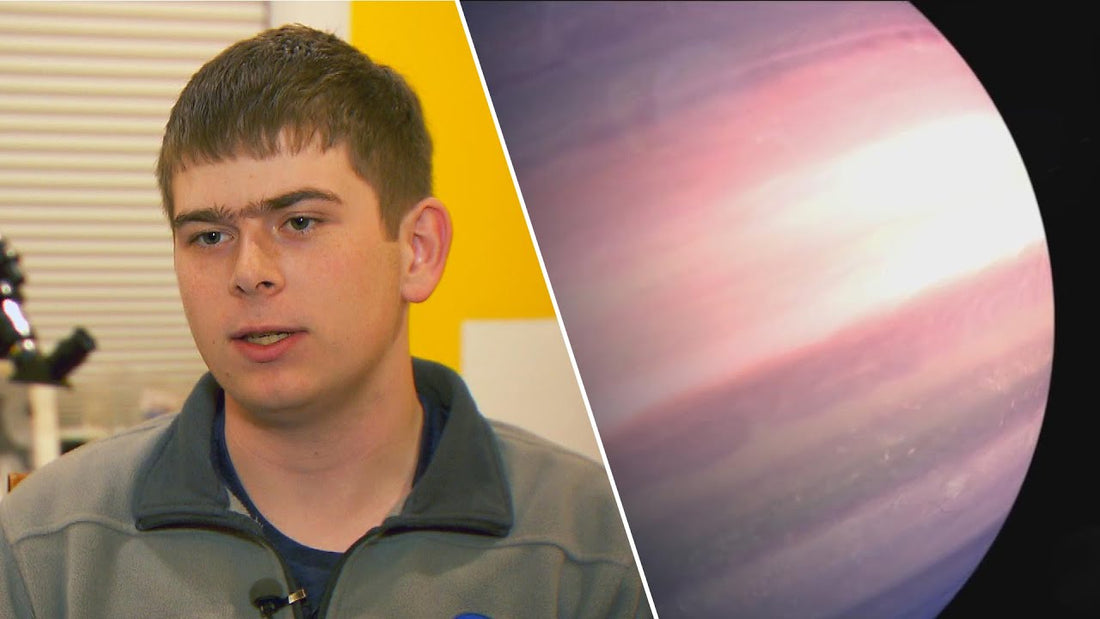
17-Year-Old Discovers Planet Three Days Into NASA Internship. Isn't A Total Loser.
Share
This is how you impress the higher ups.
You discover a planet just three days into your internship like 17-year-old Wolf Cukier while helping out at NASA in the United States.
NASA has confirmed the finding is genuine and the planet sits about 1,300 light years from Earth.
Wolf who is now back at home in Scarsdale, New York, explained he landed a two-month placement with NASA's Goddard Space Flight Centre during his three month summer break.
Tasked with examining data sent back from TESS (NASA's Transiting Exoplanet Survey Satellite), a space telescope that searches for planets outside our solar system, Wolf searched for changes in star brightness which could mean a planet passing in from of them, obstructing their light.

While some interns can barely make a decent flat white, Wolf seized the galaxy by the giblets and twisted in an attempt to make the swirly mistress spill her secrets.
And the days in, that's exactly what she did.
"I was searching for a planet that orbits two stars," the competent addition to the team said in a recent interview. "I took it to my mentor, we looked at the data from the stars and noticed two additional dips in light, so we started doing analysis to see if it actually could be a planet."
His efforts warranted getting more eyes on the data. And further analysis revealed the planet's mass is 6.9 times that of Earth.

It's name?
TOI 1338 b.
Not exactly a memorable name. But then again, none of them are.
"I don't get to name the planet. My brother had the idea of calling it Wolftopia but I think TOI 1338 b is sufficient," said the modest and enviable intern, full of motivation.
And to add to the grandeur of the fantastic work from the highly desirable intern, TOI 1338 b is no regular planet. It's a cirumbinary planet, meaning it orbits two stars in an infinity or numeral 8 pattern and a first for TESS to boot.
To illustrate this, here's an almost entirely unuseful GIF from our loathsome, waste of resources intern.

If you love the original Star Wars movies (the prequels are a terrible miscarriage of the story and the recent ones are a misaligned grab at fan service), you'll remember Luke's home of Tatooine.
In the films, Tatooine has two suns making it a circumbinary planet. Funnily enough, during his interview, Wolf was wearing a Star Wars shirt. "It's very much like Tatooine, at least how the stars would appear in the sky," he says. "So, it would also have a double sunset." Wow look at this adequate guy go!
For TOI 1338 b, one of its stars is 10% larger than our own and the other is smaller and dimmer at just 30% or so of our sun.
Unfortunately, that's as far as comparisons with Tatooine go. TOI 1338 b is inhabitable as it's extremely hot and lacks a solid surface.

So what does the future hold for this shining beacon of hope that interns can be valuable?
"I've no idea about NASA's hiring practices but it can't hurt! It's a good thing to have on my CV," he says. He adds that the space agency has been "impressed" by what he achieved on his internship though. "My mentor has been very supportive and excited. I think NASA is surprised with the amount of attention this has been getting."
Today, he wears his NASA fleece with pride (over the Star Wars t-shirt of course). Not a gift from the agency to reward him for his achievements, he explains, but bought with a discount in the employee shop. Worth it though, as according to Wolf it's a "nice jacket."
He certainly has a future in space, and thankfully he wants to pursue his love for it at university.
"When I'm there I'm planning to study physics and astrophysics," he says. "From there, a career in space research is appealing." But for now it's back to normality for Wolf although he has a little more notoriety among his high school friends. "I've had more congratulations over the past four days, than I've had over the past couple of years combined. Everybody is incredibly excited. It's a surreal experience."

Recently, some generated images of TOI 1388b were released, and they went viral on the internet. In just a few days, the images gathered 1.2 million likes and over 224,000 retweets on Twitter. These generated images of TOI 1388b were absolutely breathtaking. They portrayed the planet in beautiful pastel colors, featuring bubblegum pink, soft purple, lavender, and light green shades.
Although the planet looks mesmerizing, it’s important to note that these images aren’t real. In fact, they were created by a bot, and are just artistic depictions of TOI 1388b. The images are based on the most likely gases and components of the planet, and adjusted to suit the human eye.
Here is how social media reacted to the discovery.





Can you think of a valuable intern that pulls their weight and contributes to their teams success?
I can't...
At least ours spreads ARSE and makes videos you seem to love.
check it out and let us know your thoughts in comments - Kathy from HR
#Space_Aus




